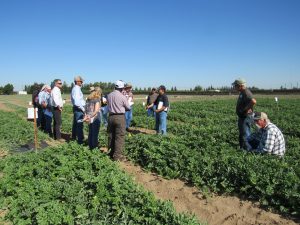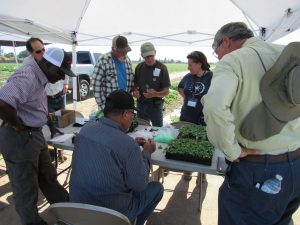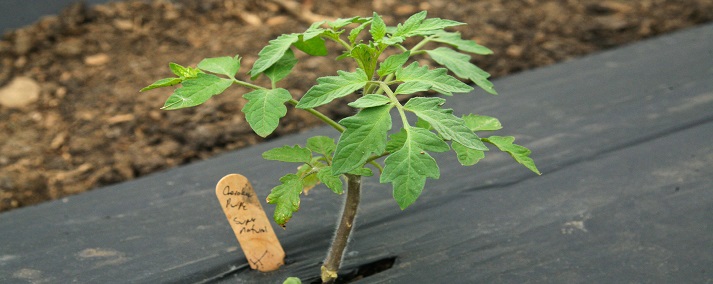
High tunnel grown grafted tomato plant for on-farm evaluation in Ohio.
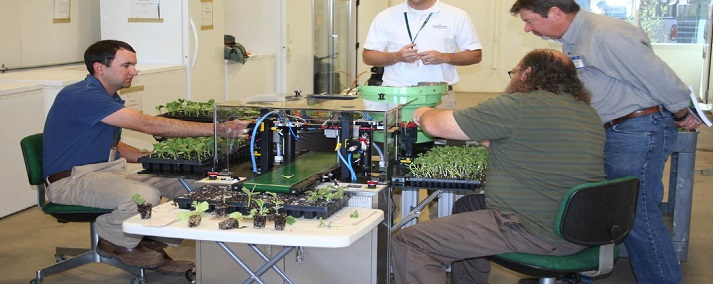
Grafting robot demonstration in South Carolina.
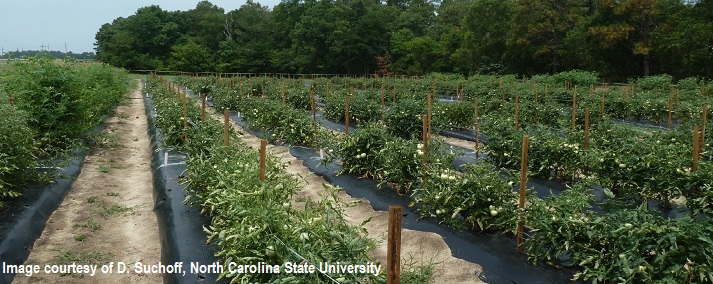
Evaluation of grafted tomato for nitrogen use efficiency in open fields of North Carolina.
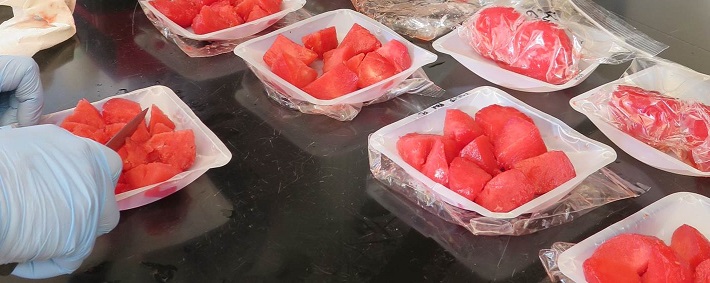
Researchers from North Carolina State University prepare samples of grafted watermelon for lycopene analysis
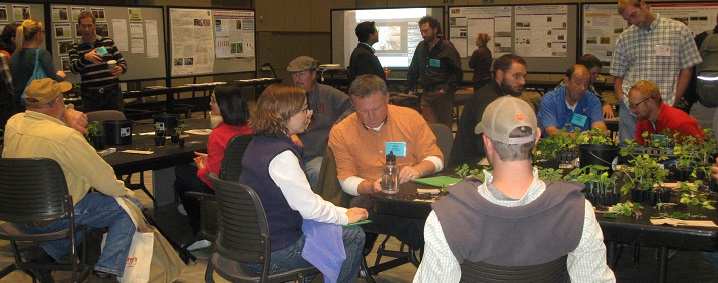
Grafting Clinic in Grand Rapids, Michigan on December 8, 2015
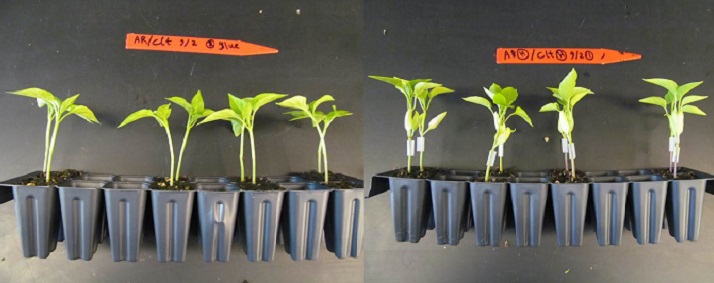
Grafted pepper plants made with acrylamide glue (left) and commercial grafting clips (right)
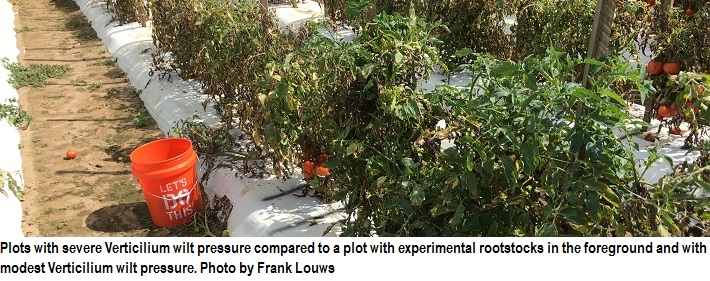
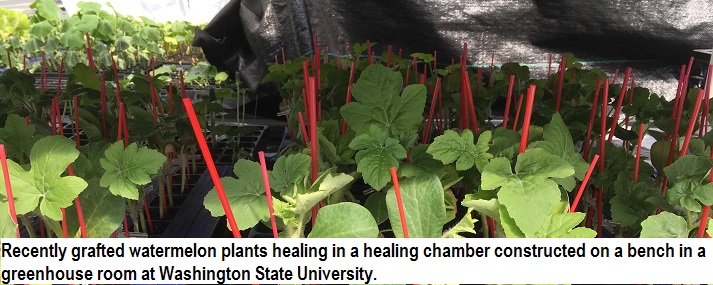
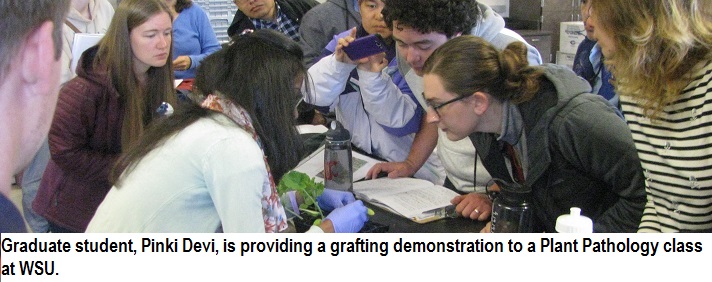
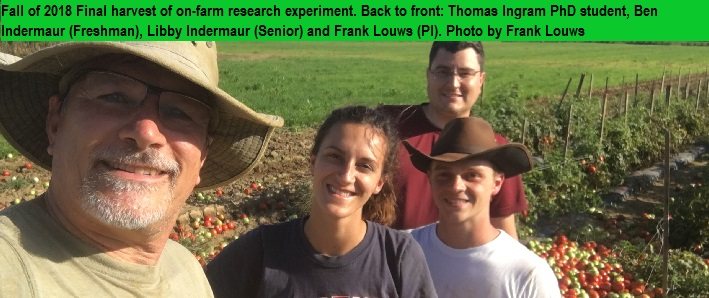
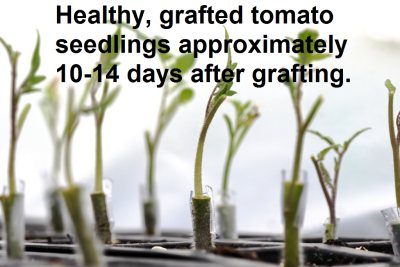
Welcome to our Vegetable Grafting website!
Grafting is a long-standing, proven technology. It has been practiced for centuries and studied for decades, but its application in the U.S. vegetable industry continues to develop. Clearly, grafted plants are versatile, scaleable, genetic solutions to production issues for growers of Solanaceae and Cucurbitaceae plants such as tomato, pepper, watermelon, cantaloupe. Vegetable grafting can also provide income to propagators (grafted plant suppliers). Although grafted vegetable plant production and use in the U.S. are rising sharply, work is needed to improve its effectiveness and efficiency and increase learning opportunities for growers, researchers, and other members of this growing industry sector.
This website is part of a national research-extension effort to advance the science and practice of vegetable grafting. We strive to provide timely, direct access to relevant, research-based information for preparing, distributing, growing, evaluating, and studying grafted vegetable plants.
What’s New in Vegetable Grafting?
The Vegetable Grafting Decision Support Tool, http://graftingtool.ifas.ufl.edu allows farmers, consultants, extension professionals, and others to analyze the economic costs and benefits of using grafted plants in crop production. Enter information specific to your situation to help determine whether using grafted plants is economically feasible. The tool was developed by the Economic Working group of the USDA SCRI-supported Vegetable Grafting Project. Contact Yefan Nian, Zhifeng Gao, and Xin Zhao for information.
August 2021’s American Society for Horticultural Science (ASHS) Annual Conference will include eighteen presentations and posters on grafted vegetable crops. View and download the presentation and poster titles with links to their abstracts. The presentations and posters will be offered by rising and senior professionals associated with nine universities (Clemson Univ., Penn State Univ., Kansas State Univ., Mississippi State Univ., Ohio State Univ., Texas A&M Univ., Univ. of Florida, Univ. of Wisconsin-Madison, and Washington State Univ.).
Past ASHS conference programs and abstracts can be found HERE and past presentation recordings HERE.
- Visit our Annual Meetings of Professional Societies page to find vegetable grafting related research pursued by plant scientists from other professional societies.
University of California Cooperative Extension hosted a “Mid-Season Open House” focused on grafted watermelon on June 29, 2021. The program was held in a large field of grafted watermelon including multiple rootstock-scion combinations planted at various in-row spacings. Demonstrations of and training in watermelon grafting were also provided. UC reports that approximately 20% of the 2021 California watermelon acreage contains grafted planting stock, an increase of approximately 5-6 fold over recent years.
Opportunities to learn about grafting continue to increase in number, diversity, and distribution.
Check our EVENTS page for a program near you.

